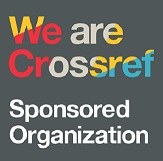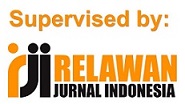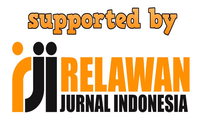FORMAL CODE-SWITCHING IN EFL SPEAKING COURSE
Abstract
Keywords
Full Text:
PDFReferences
Armiya, H., & Christina. (2022). Code Switching and Code Mixing in Youtube ’s“ bule kw ” channel. Metaphor, 5(1), 1–15.
Andriani, D. I. (2023). Code-Switching and Code-Mixing Analysis in Indonesian Songs Lyrics By Un1ty. Jurnal basis, 10(1), 67–78. https://doi.org/10.33884/basisupb.v10i1.6882
Abdullah Alaiyed, M. (2020). The Functions of Code-Switching in the Interaction of the Cartoon Characters in Dora The Explorer. Arab world english journal, 11(3), 260–275. Https://doi.org/10.24093/awej/vol11no3.16
Alsied, S. M. (2018). An Investigation of the Use of the First Language in Libyan EFL Classrooms. Teflin journal, 29(2), 155–176. Https://doi.org/10.15639/teflinjournal.v29i2/155-176
Bruin, A. De, Dick, A. S., & Carreiras, M. (2021). Clear Theories are Needed to Interpret Differences: Perspectives on the Bilingual Advantage Debate. Neurobiology of language, 2(4), 433–451. Https://doi.org/10.1162/nol_a_00038
Dawis, A. M. et al. (2023). Pengantar metodologi penelitian. Bandung: Get Press Indonesia
Eyato, R. G. (2018). Types of Codes Switching in EFL Classroom. Al-lisan, 3(2), 58–67.
Ezeh, N. G., Umeh, I. A., & Anyanwu, E. C. (2022). Code Switching and Code Mixing in Teaching and Learning of English as A Second Language: Building on Knowledge. English language teaching, 15(9), 106. Https://doi.org/10.5539/elt.v15n9p106
Hamid, S. M. (2016). Code-Switching between the Teachers and the Students of the Conversation. Exposure : jurnal pendidikan bahasa dan sastra inggris, 5(2), 174. Https://doi.org/10.26618/ejpbi.v5i2.846
Herlina, Y. (2009). Komposisi dalam Seni Fotografi. Jurnal Desain Komunikasi Visual Nirmana, 9(2), pp. 82–88. https://doi.org/10.9744/nirmana.9.2.pp. 82-88
Rolin-Ianziti, Jeanne and Varshney, Rachel (2008). Students' Views Regarding the Use of the First Language: An Exploratory Study in A Tertiary Context Maximizing Target Language Use. The Canadian Modern Language Review 65 (2) 249-273. https://doi.org/10.3138/cmlr.65.2.249
Mackiewicz, J. (2018). A Mixed-Method Approach. In Writing Center Talk over Time. https://doi.org/10.4324/9780429469237-3
Marsella, E. (2020). Exploring Teachers’ Use of First Language (L1) in EFL Classroom. Teknosastik, 18(1), 15. Https://doi.org/10.33365/ts.v18i1.483
Ma, J. (2014). Students’ Attitudes towards Code-Switching in the Bilingual Classroom of Accounting English. Journal of education and practice, 5(20), 177–188.
Marsanto, S. H. (2010). An Analysis of the Phenomenon of Code Mixing Used by Expat in Batam Island. Internasional Prasasti III: Current Reserach in Linguistic, 665–670. Https://jurnal.uns.ac.id/prosidingprasasti/article/view/1642
Novianti, W. (2013). The Use of Code Switching in Twitter (A Case Study in English Education Department). Passage, 1(2), 1–10. Https://media.neliti.com/media/publications/190912-en-the-use-of-code-switching-in-twitter-a-c.pdf/accessed:22021-12-28
Toomaneejinda, A., & Saengboon, S. (2022). Interactional Sociolinguistics: The Theoretical Framework And Methodological Approach To Elf Interaction Research. Learn Journal: Language Education and Acquisition Research Network, 15(1), 156–179.
Zuhri, M. S., suwandi, S., & Fitriati, S. W. (2022). Morphological Process of Morphemes through Word-Formation Process in Students’ Writing. English Education Journal, 12(3), 301–309.
DOI: https://doi.org/10.30743/ll.v9i1.10983
Refbacks
- There are currently no refbacks.
Fakultas Sastra
Universitas Islam Sumatera Utara (UISU), Medan
Jl. Sisingamangaraja Teladan Medan 20217
Telp. (061) 7869911, e-mail: language_literacy@sastra.uisu.ac.id









